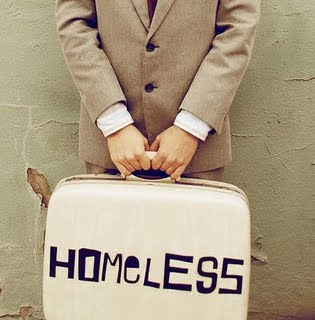WIT Life #173: Homeless by mandate
WITLife is a periodic series written by professional Writer/Interpreter/Translator Stacy Smith (Kumamoto-ken CIR, 2000-03). She starts her day by watching Fujisankei’s newscast in Japanese, and here she shares some of the interesting tidbits and trends together with her own observations.
Almost four months have passed since the earthquake/tsunami hit Japan, and one might think that after this amount of time things have gotten back to some semblance of normal. That seems to be the case for the most part in Tokyo, where except for limited electricity usage and the omnipresent uncertainty regarding radation levels, it is back to business as usual. However, for those who lived in the disaster area, it is a different story. I recently spoke to a close friend over Skype, who told me about her brother who had lived with his family in Tohoku.
They, like many others from the disaster zone, cannot be cleared to return home due to restrictions on entering areas that exceed a certain level of radiation. Instead, they have spent the last few months living a transient lifestyle and supporting themselves with aid provided by the government. They were allowed to stay for three months in in Tokyo’s lovely Asakusa Prince Hotel (though during Golden Week the hotel couldn’t sacrifice the rooms and alternative arrangements were made). While there, they were able to attend different forms of entertainment such as the circus, music concerts and movies, as well as receive free meals. They also had unlimited visits to local hospitals for health checks and monitoring of the influence from radiation.
According to my friend, a good thing that came out of this tragedy is the opportunity to see her brother and his family more. Normally she would only see them once or twice a year for Obon or Oshougatsu, but now they had the chance to spend much time together. Also, despite the circumstances, the ability to take in a variety of cultural experiences at no cost was also something to be thankful for. His family’s next destination is Hokkaido, where a ski lodge has offered to take them in during the off season. This will again be a three month stay, after which who knows where they will be next sent.
I would like to learn more about how this temporary housing/lifestyle support system is funded. My friend seemed to think it is carried out in collaboration with local governments, though it is unclear what sort of compensation these facilities are receiving for offering their services. Are some purely volunteer or are they all getting reimbursed to a certain degree? I’d be interested in finding out such details, as well as what the long-term plan is, as these services are certainly not sustainable forever. For now, I’m glad they are providing a safety net for Tohoku citizens who have become involuntary refugees.


Comments are closed.